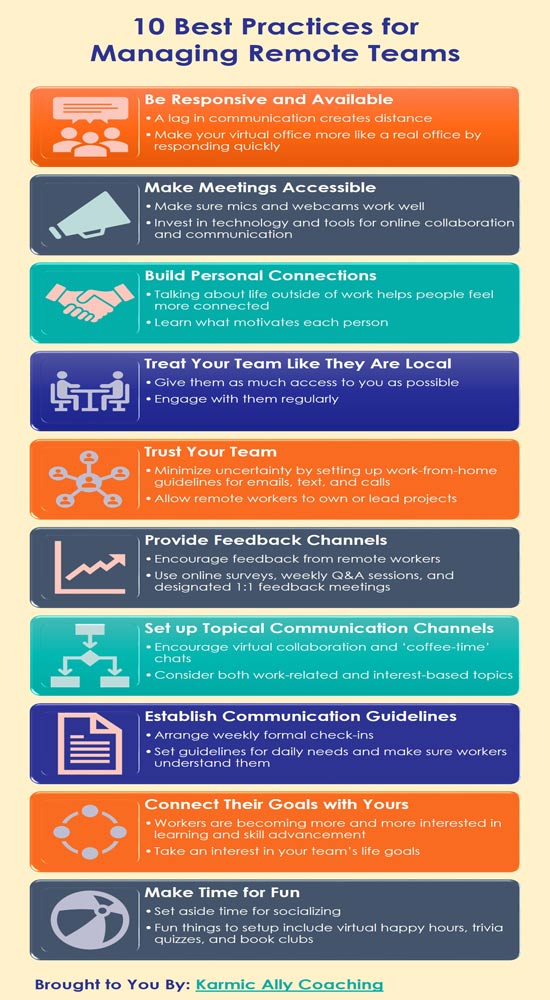This post has already been read 859 times!

Intelligent leaders know their success depends upon their ability to make the group of people they are supposed to lead work together as a team.
Shakespeare definitely knew what he was talking about when he wrote ‘uneasy lies the head that wears the crown’ (Shakespeare’s play, Henry IV, Part II) because being a leader isn’t easy.
It takes a lot of personal and professional work to be the kind of leader a team wants to follow.
You have to establish the right power base to command respect and ensure the team you build will work together as a unit rather than a bunch of people thrown in together for a common cause.
There are times when you need to lead on a war footing, especially when handling a crisis situation and other times, set the tone and pace by being a good role model.
Then there are also times when you might find yourself being an unofficial leader of a group set up to achieve a project or task when the appointed leader is ineffective or unable to guide the team to achieve the final goal.
Given your knowledge and expertise you might become the leader guiding an otherwise rudderless boat to the shore of project completion.
That happened sometime back with a friend who was asked to be part of a steering group for an important project at her organization.
The problem was, the Project Manager who was the driver of the project wasn’t able to get the right information or support from the owner of the project and the update meetings weren’t going anywhere.
My friend’s efforts to be helpful with suggestions led to a situation where the driver started looking to her for guidance when in fact her role was to simply do an overview and raise points to be included in the project.
I consider my friend to be an influential leader and clearly, in a crisis moment with a deadline looming like a dark cloud the driver turned to her to save the day and his job.
She extricated herself from the situation with great diplomacy and sensitivity and regained her position of a steering group member rather than doing the project but there were lessons to be learned.
For starters the owner of the project was not assisting the driver with help and resources and failed in their job of being a leader and other members ended up doing tasks that were not theirs in the first place which meant a break in the protocols of planning, execution and review.
It brings home an important point, a leader must be able to understand team dynamics.
In earlier posts I’ve written about how the team leader can help the team achieve their personal professional goals too. In this post, the focus is on the leader and his/her ability to manage team or group dynamics for success.

Understanding Group or Team Dynamics
The term Group Dynamics, first used back in 1939 by social psychologist and change management expert Kurt Lewin, is defined as “positive and negative forces within groups of people.”
Lewin noted that people often take on distinct roles and behaviors when they work in a group.
Group dynamics describes the effects of these roles and behaviors on other group members and on the group as a whole whether it is positive or negative.
As a leader, you need to consider group or team dynamics because that’s what’s going to determine how effective your team works and that then influences the final outcome of any project your team works on.
Once you know the parameters and monitor them, you can influence the outcome.
In a way that’s what my friend did once she realized what was happening and got the project back on track with the assigned leader (the owner of the project) and the driver taking back ownership for the project).
We used the same concept in my audit days when the audit teams were planned based on creating positive group dynamics. We matched the skills that were required for the audit with the ability of the audit team members to work together, helping each other and being productive.
In high pressure assignments, having a group with poor dynamics is a recipe for disaster and the leader will end up spending more time on conflict management than getting the job done – even if each team member is supposed to be competent and talented at their work.
Managing Team Dynamics in today’s business world
Managing team dynamics can be challenging in today’s business world with global and remote teams but it can be done.
There are factors an influential leader needs to consider while managing team dynamics.
Here are a few that I’ve seen during my global corporate world days as well as from the experiences of clients.
Working with Diversity
The ability to work with diversity and especially within a group is critical for the leader. Different issues can arise and it’s for the leader to decide how they will handle it to ensure performance of the team under them isn’t adversely affected.
The global economy has brought together diverse cultures interspersed into the workplace. Sometimes, this can result in a form of culture shock.
Companies having a global presence understand this and offer training on how to manage diversity. The training sets up guidelines and rules on how to behave in the workplace and what is and is not expected when certain conditions arise.
The training is usually mandatory and human resource departments are often looked upon to monitor violations of the guidelines. Sometimes, they may require employees to retake the training to reinforce the concepts.
In one of the energy sector company’s where I worked, this training was mandatory even for the spouses before being sent on international assignments and it helped prevent many potential misunderstandings with the local staff.
I share my ideas on bridging cultural differences in my blog post How to bridge cultural differences in business with ease.
Diversity can take different forms and each form needs to be handled in a special manner.
Employees may feel alienated when a group of people start speaking a foreign language. It might seem rude but it’s not all that simple.
People from different countries usually speak their native tongues better than second languages so while working they can get more accomplished by doing so.
One way to help in this area, is to ask to speak in a common language when the conversation turns casual and only speak in the native language when conducting business. This way everyone can participate in the casual conversations.
Sometimes something as simple as foods that people of different cultures eat can cause people to feel uneasy. It may not smell right to those unfamiliar with them or it could be a type of food that they would never imagine eating.
Luckily, issues of food are usually much lighter than other issues and are often a great way to break the ice.
Religion is another tricky situation since beliefs are something that people hold for much of their lives. Even with training, it can be difficult for some people to fully accept religions outside of their own.
Many people tend to overcome these differences after working together for a while. For others, it may take more time, if at all.
The leader needs to ensure ground rules are set where faith and beliefs don’t enter the professional workspace.
It’s not just cultural issues that may come up, it can be issues across gender lines and sexual orientation. There are more women than ever in the workplace and in decades past men tended to be insensitive to women that did work.
Sexual preferences and sensitivity to people that are trans-gendered are all situations that make diversity even that much more complicated.
What people tend to find out after working with these diversities, is that people are not that much different overall.
In fact, if we search for common ground, we can establish new workplace friendships and bonds that can last a lifetime as well as learn something new in the process.
Working Well in a Virtual Environment
While many of us are accustomed to working from home from time to time, in pandemic times it has become a normal situation with many professionals preferring to continue to work from home or at least for the major part of their work week since one can connect with the office through the internet.
This can present some challenges in working well with people that are still required to be in the office full time.
The first challenge is virtual workers are going to be the envy of their office counterparts and that could lead to some jealousy.
Why do some employees get to do it and others are not allowed?
As a leader, you’ll need to handle this situation delicately. Some jobs need the worker to be onsite. For instance, a computer operations person may need to swap out drives, or backup tapes, etc.
Organizations should have some kind of provision that gives onsite workers incentive for not being able to work at home.
Maintaining good group dynamics becomes challenging for the leader because he has to manage a scattered team and keep them working together as a group.
While the individual team members will need to ensure they maintain professional standards outside of the workplace, here are my 10 best practices that the leader should follow to help them and the team.

Defuse charged situations and try to turn them into a Win-Win
As a leader, you’re going to deal with adverse situations at work. It’s a fact of life.
Under pressure even the best of colleagues can end up having fights that can impact the entire team’s performance and the quality of the work produced.
The worst way to handle this is to blow up and get angry. This puts you on the defense and it’s difficult to think rationally when this happens. It also can lead the way into saying something that you’ll regret later.
A better approach is to find ways to make the situation a win-win for everyone involved. This may not always be easy, or even possible, but if you can make it happen, it will diffuse the situation and create more harmony in the work environment.
The first step in looking for ways to make it a win-win is to try and see the situation from the perspective of the parties involved. Perhaps one of them is experiencing some problems at home and it’s affected his or her judgment at work?
You have to try to find out without appearing to pry. This could be as simple as asking if the person has something they want to talk about. Even just showing that you are willing to do this can go a long way to diffuse the situation.
You could proceed to offer to take on some of the person’s workload and assign it to someone else if that’s what they are struggling with. Just make it clear that this is a short term arrangement, with the understanding that they need to take up the duties after such a time.
In my experience, when there is a good and healthy team environment, colleagues do rally around the team member needing support and work isn’t affected.
If the situation is work related, try to work with the person to find a solution that will help them solve it. This will take some time out of your day but having the person return to a good place is going to make this extra time worth it.
Of course, there are going to be people that no matter how much effort you put in to try and help, it simply won’t work out.
That’s when a leader who needs to keep team morale high has to decide on tougher action.
Maybe the team member needs counselling with an appropriate professional within the organization or even put on a performance improvement plan.
This should be the last course of action but may be necessary. You will likely find that most people will be receptive when they see that you both come out as winners.
There will never be a perfect team environment and you will almost certainly have team members who are sloppy and make constant mistakes.
This can create a challenge for the team but by remaining calm and focused on solving whatever the problem is, the team can move forward with the project.
Final Thoughts on managing Team Dynamics
Leadership seems to come naturally for some. For some managing group dynamics is more than just an organization but a bigger population.
George Washington, founding father and Revolutionary War commanding general of the United States, Mahatma Gandhi who started the non-violence Independence Movement in India, Martin Luther King and Winston Churchill all seemed to find just the right words and tone of voice to lead nations through difficult times and forward to positive changes.
The names I’ve just taken are of course recorded in history but you don’t have to aspire to be a world-class leader to reap the benefits of leadership skills.
Whether you’re aspiring to lead a corporation, a sports team or your own family in a way that promotes honesty, integrity and a purposeful lifestyle, leadership skills are necessary to ensure your success.
Leadership means different things to different people. And, just because someone may have a “title” or be in a leadership role doesn’t necessarily mean he or she is a true leader.
The model (definition) of a leader is someone who motivates and inspires themselves and others to move forward to reach a goal or vision to the benefit of everyone.
A good leader manages and coaches their teams on how to make a vision a reality, whether it’s winning a championship, completing a project or winning a war.
In other words, does this person influence others for all round benefits?
In my experience, people often get promoted to leadership ranks without the right training and while they may be good at their work, they aren’t able to create the right impact to lead a team.
Think about it.
What would it mean to you and your career if you got a better understanding of what is required of you as a leader in the workplace as well as develop your own power base, learn to influence, inspire and empower people and your team to take action?
To lead a team with good team dynamics?
Are you an influential leader? Do you want to improve this skill?
If yes, then you’ll also want to check out A crash course to become an Influential Leader.




 I adhere to the Certified Coaches Alliance Code of Ethics and Standards. A copy is available on request.
I adhere to the Certified Coaches Alliance Code of Ethics and Standards. A copy is available on request.
 Let's Talk through the Connect Form:
Let's Talk through the Connect Form: